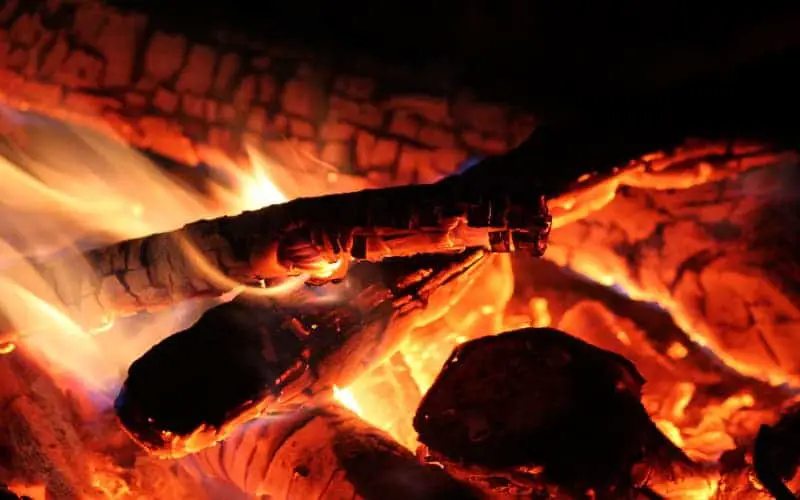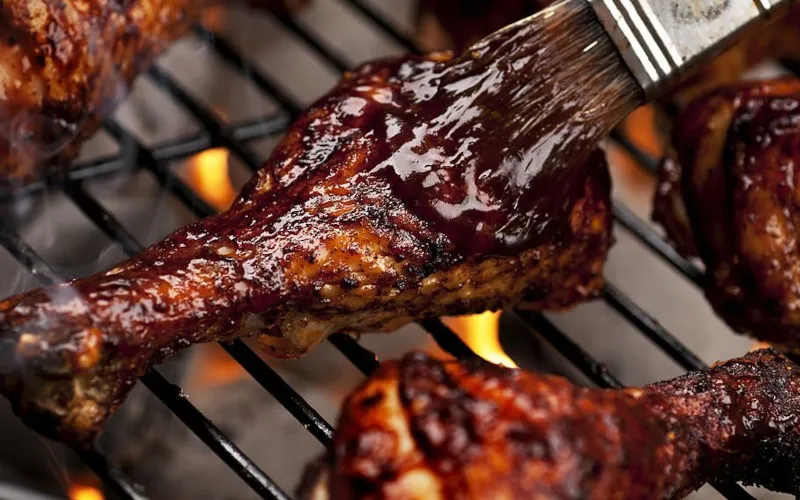I love nothing more than smoking a delicious brisket. The process can be time-consuming, but the result is always worth it. When smoking a brisket, I often decide whether to use the flat or the whole brisket.
In this article, I will explore the differences between the two cuts and provide detailed instructions on how to smoke them.
What is Brisket?
Before we dive into the differences between the flat and the whole brisket, let’s first define what brisket is. Brisket is a cut of meat from the breast or lower chest of beef or veal. It is a tough cut of meat, with many connective tissue and muscle fibers.
This makes it perfect for slow cooking methods, such as smoking or braising, as the low and slow cooking process helps to break down the connective tissue and create tender, flavorful meat.
Difference Between Flat and Whole Brisket
So what is the difference between the flat and the whole brisket? The flat is the leaner, more uniform part of the brisket, while the whole brisket includes the flat and a thicker, fattier portion called the point.
The point is often used for making burnt ends, which are small, bite-sized pieces of brisket caramelized in a sweet and spicy BBQ sauce.
Is Brisket Flat Better than Whole Brisket?
It depends on your personal preferences and the specific recipe you are using. The flat and the whole brisket have unique characteristics and can be used to make delicious BBQ dishes.
The flat is leaner and more uniform than the whole brisket, making it easier to smoke and slice. It also has a more pronounced beef flavor, as there is less fat to mask the taste of the meat.
On the other hand, the whole brisket includes the flat and the point, a thicker, fattier portion of the brisket. The point is often used for making burnt ends, which are small, bite-sized pieces of brisket caramelized in a sweet and spicy BBQ sauce.
Smoking meat can be tricky, and one thing to remember is that smoking a brisket flat may dry the meat. To achieve maximum flavor, I suggest purchasing an entire Prime or Choice grade whole beef brisket for your smoker. This cut of beef will produce an incredibly succulent smoked dish.
Some people prefer the added flavor and moisture that the point provides and enjoy the contrast between the lean, flat, and rich, flavorful point.
Deciding between flat and whole brisket depends on what you prefer and the recipe at hand. You can prepare mouth-watering BBQ dishes with either, so it’s worthwhile trying both to determine your preference.
Related: How Long To Thaw A Brisket?
Smoking Flat Brisket
Smoking a flat brisket is easier than smoking a whole brisket, as the flat is a more uniform cut of meat.
Here is a step-by-step guide on how to smoke a flat brisket:
Step 1: Preparing the Brisket
Before you begin smoking the brisket, you need to prepare it. Start by trimming off any excess fat, leaving a thin layer on top to help keep the meat moist.
Next, mix a dry rub of your choice and coat the brisket. Some good options for a dry rub include paprika, garlic powder, onion powder, and brown sugar.
Step 2: Preheating the Smoker
Preheat your smoker to 250°F (121°C). If you are using a charcoal smoker, you will need to add some lit charcoal to the bottom of the smoker and then add some wood chips for smoking.
I recommend using oak or hickory for a strong, smoky flavor. If you use a gas smoker, turn it on and set it to the desired temperature.
Step 3: Smoking the Brisket
Once the smoker is preheated, place the brisket on the grates, fat side up. Close the lid and let the brisket smoke for about 1 hour per pound or until the internal temperature reaches 165°F (74°C).
You will need to add more charcoal or wood chips every hour to keep the temperature and smoke consistent.
Step 4: Wrapping the Brisket
After the brisket has been smoked for a while, the surface of the meat will start to become dry and crusty, a process known as the “bark.” To keep the brisket moist and prevent the bark from becoming too hard, you will need to wrap the brisket in foil or butcher paper.
I prefer to use foil, as it creates a tighter seal and helps to retain more moisture.
To wrap the brisket in foil, place the brisket on a large sheet of foil and fold the sides of the foil to create a tray. Pour about a cup of beef broth or apple cider vinegar over the brisket, and then tightly seal the foil around the brisket.
Return the wrapped brisket to the smoker, and continue cooking until the internal temperature reaches 205°F (96°C).
Step 5: Resting the Brisket
Once the brisket has reached the desired internal temperature, please remove it from the smoker and let it rest for at least 30 minutes or up to 1 hour. Through this process, the juices will be evenly spread throughout the meat, making for a more succulent and tender brisket.
To keep the brisket warm while it rests, you can wrap it in a towel or place it in a cooler.
Step 6: Slicing and Serving the Brisket
After the brisket has been allowed to rest, use a sharp knife and slice against the grain for thin pieces full of flavor. Serve the brisket with your choice of BBQ sauce, and enjoy!
Smoking Whole Brisket
Smoking a whole brisket can be a bit more challenging, as the point and the flat are two different cuts of meat with different levels of fat and connective tissue. Here is a step-by-step guide on how to smoke a whole brisket:
Step 1: Preparing the Brisket
As with the flat brisket, you will need to prepare it by trimming any excess fat and coating it with a dry rub. However, because the point is fattier than the flat, you may want to leave a bit more fat on the point to help keep it moist during the smoking process.
Step 2: Preheating the Smoker
Preheat your smoker to 250°F (121°C) in the same manner as described above.
Step 3: Smoking the Brisket
Once the smoker is preheated, place the whole brisket on the grates, fat side up. Close the lid and let the brisket smoke for about 1 hour per pound or until the internal temperature of the flat reaches 165°F (74°C).
You will need to add more charcoal or wood chips every hour to keep the temperature and smoke consistent.
Step 4: Separating the Flat and the Point
Once the flat of the brisket reaches the desired internal temperature, you will need to separate the point from the flat. Using a sharp knife, carefully cut the point away from the flat, taking care not to pierce the flat. Set the point aside, and return the flat to the smoker.
Step 5: Wrapping the Flat
As with the flat brisket, you will need to wrap the flat of the whole brisket in foil or butcher paper to keep it moist and prevent the bark from becoming too hard.
Follow the same process described above: pour a cup of beef broth or apple cider vinegar over the flat before sealing it in the foil. Return the wrapped flat to the smoker, and continue cooking until the internal temperature reaches 205°F (96°C).
Step 6: Smoking the Point
While the flat is smoking, you can begin smoking the point. The point will take longer to cook than the flat due to its higher fat content. Place the point on the grates, fat side up, and let it smoke for about 1.5 hours per pound or until the internal temperature reaches 205°F (96°C).
You may need to add more charcoal or wood chips every hour to keep the temperature and smoke consistent.
Step 7: Resting the Brisket
After the flat and the point reach their desired internal temperature, take them out of your smoker. Then let them rest for a minimum of 30 minutes or up to an hour before serving.
Giving the brisket time to rest will allow the succulent juices to redistribute back into the meat and create a melt-in-your-mouth tenderness.
Step 8: Slicing and Serving the Brisket
After the brisket has rested, it’s time to slice and serve it. Using a sharp knife, slice the flat against the grain into thin slices. Cut the point into small, bite-sized pieces, and toss them in a sweet and spicy BBQ sauce to create burnt ends.
Serve the brisket with your choice of BBQ sauce, and enjoy!
Conclusion
As you can see, smoking a brisket flat or whole requires a bit of time and patience, but the result is always worth it. The flat is a bit easier to smoke, as it is a more uniform cut of meat, but the whole brisket allows you to create burnt ends, which are a delicious addition to any BBQ spread.
Whichever method you choose, follow the steps carefully, and you will be rewarded with a delicious, tender brisket that will impress your friends and family.






